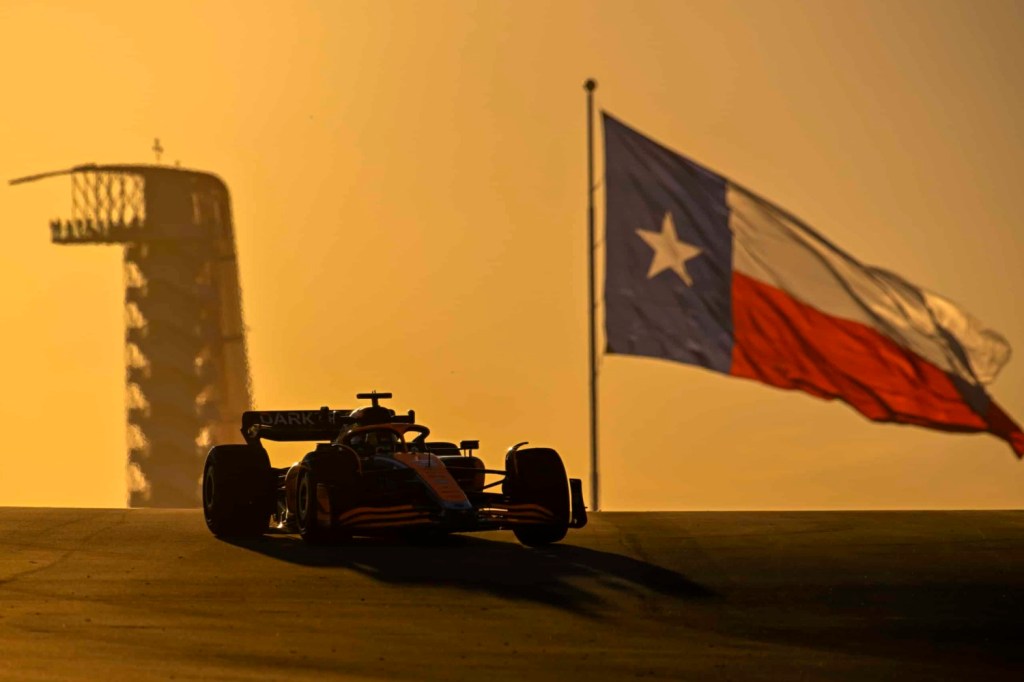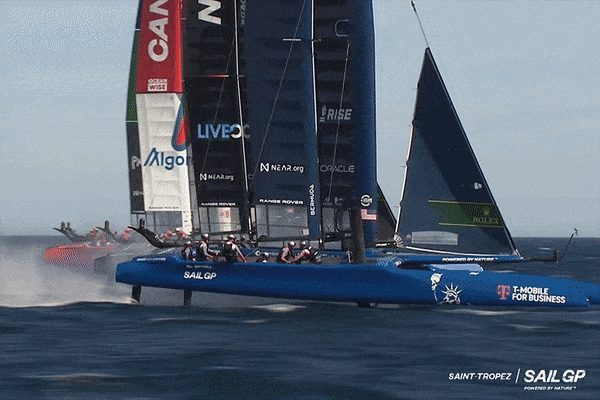Austin is a weird place.
The Texas capital’s unofficial slogan is “Keep Austin Weird,” and that singular identity has survived, even as the startup hub, college town, and government seat becomes an increasingly popular place to live.
If anything, Austin’s weirdness has made it one of the fastest-growing cities in the United States.
“To me, what that’s always meant is that there’s a higher tolerance for taking risks in this city than any city I’ve been to in the world,” says Austin mayor Steve Adler.
Bobby Epstein and other early investors in Circuit of the Americas certainly gambled when they decided to build a world-class, purpose-built motorsport racetrack in the middle of Texas.
But a decade after the first United States Formula 1 Grand Prix was staged at COTA, it’s clear that the risk is paying off: Last year, 400,000 spectators showed up over the course of the three-day event — a record for any F1 race staged in North America.
For the 2022 festivities this weekend, F1 is expecting 440,000 — and those around the track are even more optimistic.
“We could take in about a half a million visitors over the weekend this year,” says Epstein, COTA’s chairman. “My expectations are that this will be no less than the greatest event Formula 1 has ever had in their 70-plus-year history.”
A Checkered History
Formula 1 didn’t enjoy the smoothest ride in the U.S. prior to COTA’s construction.
The championship enjoyed 20 years of consistency at Watkins Glen, before less successful stints with a street race in Phoenix and a more traditional race at the famed Indianapolis Motor Speedway slowed things down.
So bringing F1 back to America would take an enormous effort that could hold universal appeal to F1’s teams, administration, and international fans — plus provide stability for years to come.
Luckily, everything is bigger in Texas.
“They were incredibly excited to have a place in the U.S. after many years of temporary circuits or being the second fiddle wherever they went,” Epstein says. “So they enthusiastically embraced the idea of a purpose-built circuit.”
“The beautiful thing about Austin is it’s a custom-built circuit,” says Brandon Snow, Formula 1’s commercial managing director. “The drivers love it. It’s a race that people really enjoy watching. It’s exciting, it’s fast.
“It’s the purity behind an F1 race in a circuit.”
The race attracted a mix of “curious and passionate” fans to the track’s first two editions in 2012 and 2013, Epstein says: “We had the people who had a vision of the fashion and sex appeal of Formula 1 in their minds, and those who were passionate about the racing and followed the sport.”
But after that, Epstein and the rest of COTA’s execs realized that F1’s limited American appeal would not be enough to sell tickets to the event.
So the circuit developed what it calls a “true festival model”: The weekend now features live music (Green Day and Ed Sheeran in 2022), vendors from across Austin’s famed restaurant scene, and other carnival-type attractions like a Ferris wheel.
Epstein says a big turning point for COTA was when it attracted Taylor Swift to play her only concert of 2016.
“We did that to give the fans more value for their dollar, but also to expose a younger demographic to the sport that would not have otherwise engaged.”
The “Drive to Survive” Push
Then, of course, a more monumental leap in F1 and COTA’s popularity came in 2019 — courtesy of the first season of Netflix’s “Formula 1: Drive to Survive.”
Paul Martin — one of the co-founders of Box to Box Films, the production company behind “Drive to Survive” — recalls how different shooting the second season of the show in Austin felt compared to the first.
“Someone just kind of looked at [my credential] and was like, ‘Oh my God, you made that Netflix show, we love that show. We’ve never been to a race before, and we’ve come to the race,’” he says. “And we just heard that time and time again.
“We came away from that weekend in Austin like, ‘Holy s–t, something’s going on here.’”
The staff at the Circuit felt it, too.
“It’s really allowed people to connect with the sport on a different level,” says Epstein. “And so I think we’ve transitioned back to where a significant part of the crowd is there because they are truly Formula 1 fans. They’re fans of the drivers and of the teams, and they’re the most educated fans we’ve ever had.”
The impact of “Drive to Survive” on American viewing audiences is immense.
- Netflix is notoriously tight-lipped about its viewing metrics, but Season 4 was reportedly the most-watched series on the streamer in 33 countries — including the U.S.
- The U.S. is the fast-growing market for F1 on social media, gaining 1.3 million followers on social media from September 2021 to September 2022 — a 40% increase.
- Out of the top 10 markets, the U.S. has the highest growth, with average TV audiences of 3.2 million — a 46% increase from 2021.
- ESPN and F1 recently announced a multi-year extension for the American media rights through 2025.
“It’s just enabled the U.S. fan to get into Formula 1 in a different way with the stories, people, personalities and drama that then has them moving into understanding the race even better,” Snow says. He adds that the “education side” of the show has helped bridge the gap between European and American audiences.
Ultimately, the cultural impact of the show on Americans has propelled the sport to new heights in the country.
“In the U.K. and that, it’s a hit show — but over here it just seems to have penetrated the zeitgeist in a way that has kind of blown us away, to be honest,” says Martin.
Turbo Boosted Business
The “Drive to Survive” effect — combined with the Circuit of the Americas’ proficiency for hosting the sport itself — has had profound ramifications for Austin’s economy.
“For many people around the world, it places us on the map,” says Adler. “It’s like having a Super Bowl every year in terms of economic impact.”
Indeed, the U.S. Grand Prix is putting up numbers similar to The Big Game.
- Epstein expects about 65% of the visitors this weekend to come from outside Texas — a boon to the local hotels and growing airport.
- In 2021, the weekend generated $434 million in direct spending by racing fans and $189 million in indirect spending for businesses in the local supply chain.
The lucrative events allowed the Circuit to collect nearly $200 million in reimbursements from the state between 2012 and 2020 — and inspired Formula 1 to double down on its American presence.
- F1 recently announced that the USGP will remain in Austin through at least 2026.
- Many teams in the paddock are now searching for American drivers, with Williams Racing announcing that Florida native Logan Sargeant will join the team in 2023 assuming he attains enough Super License points following the F2 finale in Abu Dhabi.
- COTA set the example for new races in Miami (first staged in May) and Las Vegas (premiering in Nov. 2023).
“If Miami and Vegas are a great race experience for some of the newer people coming into Formula 1 in the U.S., Austin is really that race that delivers for all of the people who’ve been with us for years,” Snow says. “We use that as a demonstration of the type of racing we want to see happening in all of our races.”
Now, the city’s influence is extending to motorsports in general.
- COTA has staged MotoGP races since 2013.
- It began staging NASCAR races in 2021.
Austin is showing the rest of the country, and the world, that it’s a city on the rise. It’s a place that can host world-class events — even while it’s still keeping things weird.
“This is a festival city, where people like to gather and celebrate being alive with other people,” says Adler. “So it really fits with who we are.”



